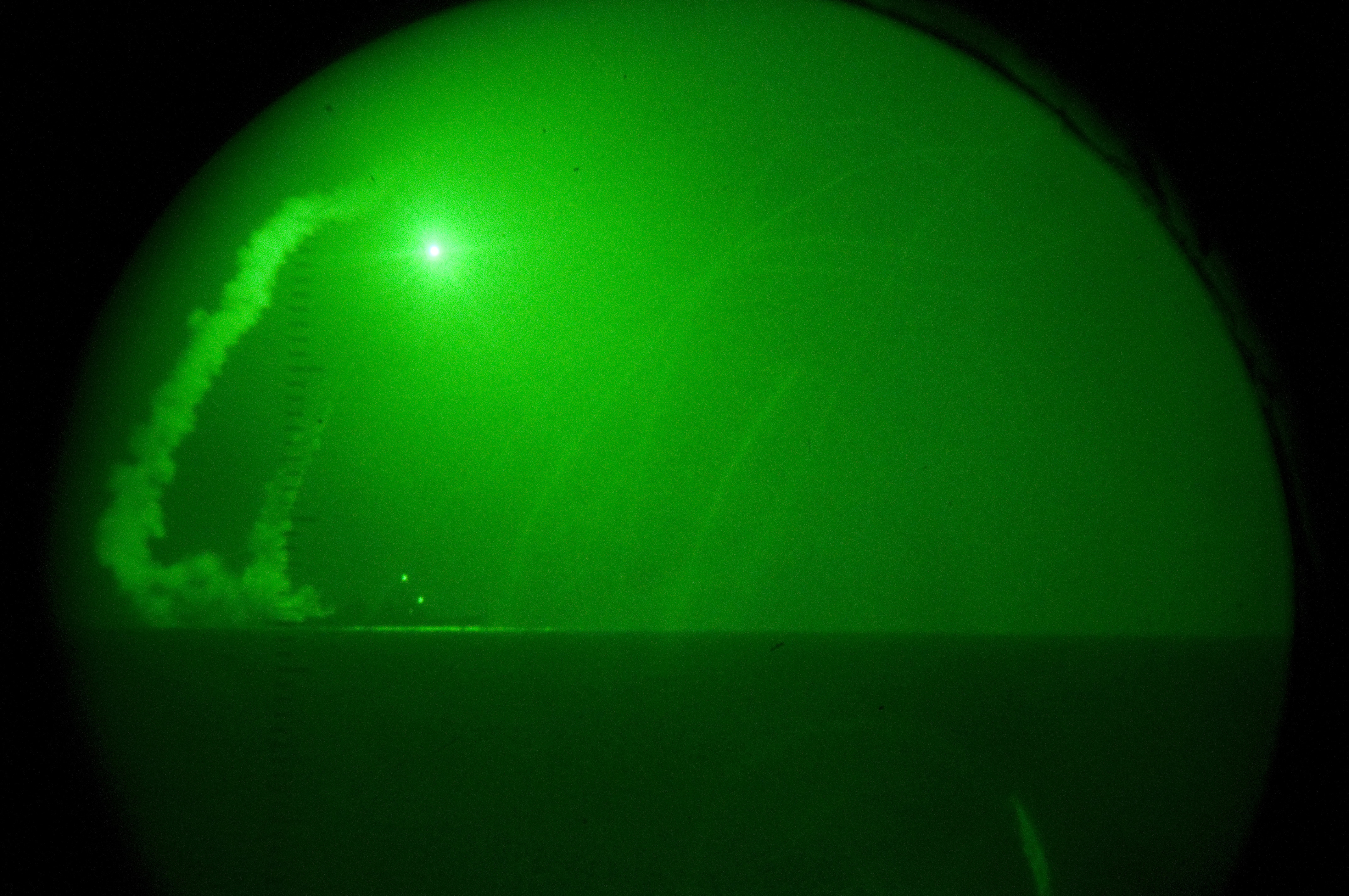
The Tomahawk Land Attack Missile (TLAM) has long been a mainstay of the U.S. strike weapon inventory. Launching from ranges out to 1,000 miles and armed with a 1,000-pound warhead, it is the Navy’s “Kick Down the Door” weapon, attacking well-defended high-value land targets. The BLK IV missile is the latest variant in a steady progression of capability, incorporating mission planning, navigation and guidance, and command and control upgrades designed to improve responsiveness and target flexibility. Combat-proven and operationally reliable, Tomahawk remains a weapon of choice for planners and commanders alike. The FY 2016 budget maintains production and inventory levels, reflecting a continued high demand signal.
In response to the growing anti access/area denial (A2/AD) challenge on land and sea, the Navy is evaluating various weapon options, including further modernization of the Tomahawk BLK IV missile. Those enhancements (system communication and data links upgrades, an advanced electronics system, and a terminal guidance seeker) would provide a maritime strike capability while simultaneously addressing critical land targets. The January 2015 controlled demonstration of a BLK IV missile successfully engaging a moving maritime target provides a glimpse of “what could be” with Tomahawk in future operations.
In a broader and related initiative, the surface Navy’s senior leadership has articulated a pioneering concept to “reclaim dominance in the maritime domain with a shift to the offensive.” VADM Tom Rowden’s vision of “Distributed Lethality” is clearly intended to address the challenges of the emerging security environment. Focused on the restoration of the striking power of the U.S. surface fleet, it encompasses effective capabilities, innovative employment concepts and a new operational mindset.
And there is another element that must be factored in as the U.S. Navy tackles the complexities of A2/AD. That is the role of allies and international partners. The National Security Strategy, National Military Strategy and the Cooperative Strategy for 21st Century Seapower (i.e., Maritime Strategy) all convey the need to operate with and “strengthen the global network of navies” in the face of future trials. Indeed, a key principle of the Maritime Strategy states that “. . . naval forces are stronger when we operate jointly and together with allies and partners. Merging our individual capabilities and capacity produces a combined naval effect that is greater than the sum of the parts.”
The current environment amplifies the importance of such partnerships. Unanticipated flashpoints burden ongoing operations and traditional commitments. The “tyranny of distance” further strains a reduced force structure. Our naval air, surface, and submarine forces simply cannot be everywhere at once. An austere budget limits resources available for development and production. Therefore, it is essential to uncover operational and acquisition efficiencies in order to generate the capabilities required.
In that context, the Navy should offer the Tomahawk missile as a foreign military sales (FMS) program to key NATO and Pacific Rim Allies. Such an approach aligns with the spirit of the Maritime Strategy and other national security documents. And proposing Tomahawk for FMS can mitigate both the security and budget challenges the Navy will face in the future.
Deterring Common Adversaries
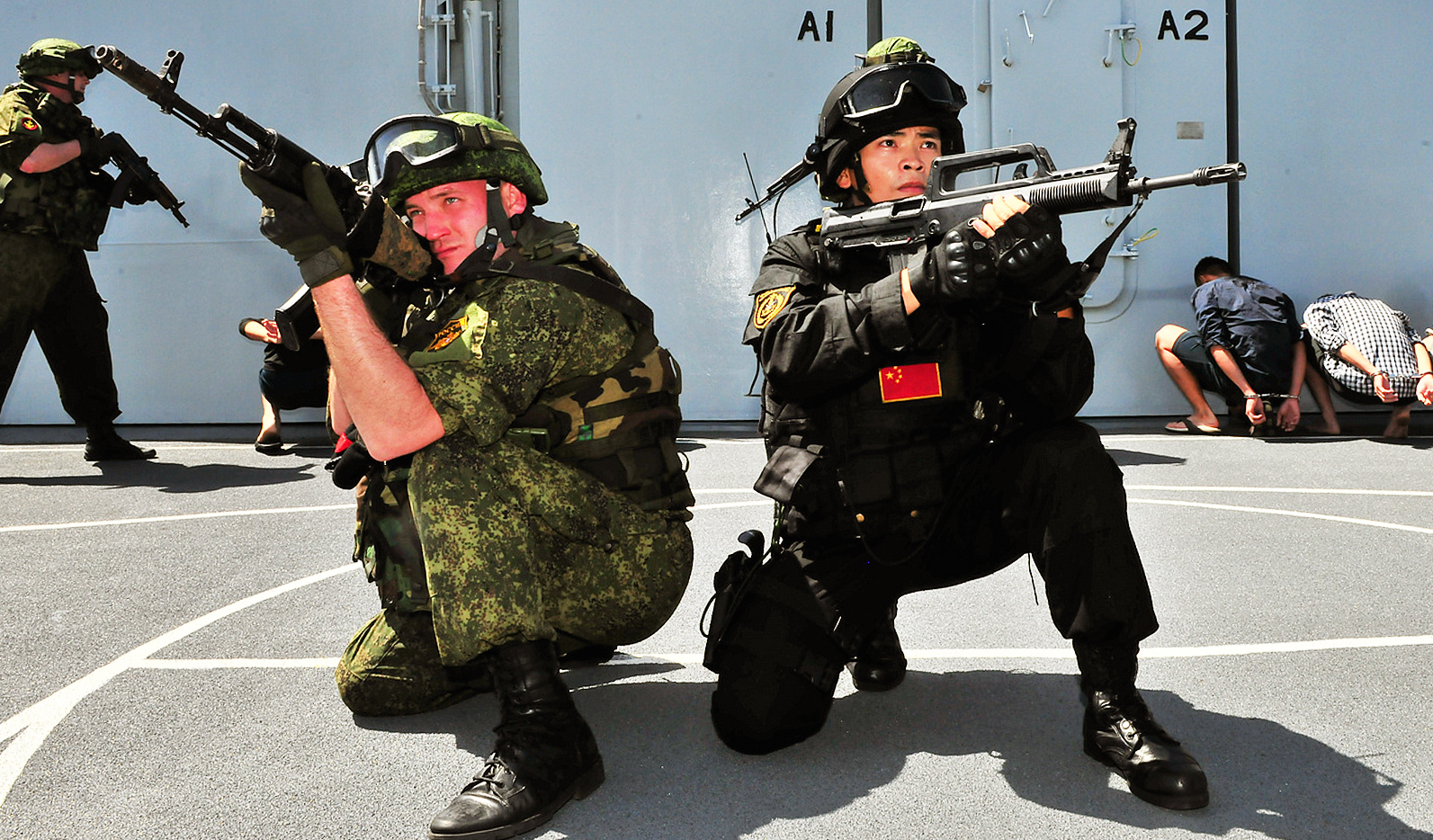
The United States has a vested interest, common with our allies and partners, in “assuring access to overseas regions” and “preventing our adversaries from leveraging the world’s oceans against us.” However, we are now seeing other countries actively working to prevent such access, and turn the maritime domain into one of risk.
Over the past several decades the Peoples Republic of China has pursued a comprehensive naval modernization program, including the development of long range anti-ship weapons. China’s neighbors are taking note of this growth in offensive firepower, as well as the PRC’s increasingly hardline approach on numerous territorial disputes. The ongoing artificial island expansion is one example of how China is altering the security status quo. As a result, defense spending is on the rise across the region. Indeed, such actions may precipitate a fundamental shift in the way other nations view their security needs. For example, Japan recently authorized overseas combat missions for the first time since World War II.
Elsewhere, NATO members face a belligerent Russia on their borders. The 2014 annexation of Crimea has been followed by forceful military movements throughout the region, including snap naval exercises and increased airspace incursions by fighter and bomber aircraft. Russian military and naval doctrine released over the past 12 months further solidifies a policy of confrontation. Although A2/AD is often viewed in the context of the Pacific region, recent remarks by Gen. Frank Gorenc (commander, U.S. Air Forces – Europe) highlight the upgrades Russia has made and the problems these pose for NATO. The impacts of such capabilities are evident in the Middle East, where Russian guided-missile cruisers operating in the Eastern Mediterranean Sea “all but block the establishment of a no-fly zone in Syria.”
Wary of escalation, the U.S. administration appears reluctant to confront or deter potential adversaries. Earlier presence operations by the littoral combat ship (LCS) and P-8 Poseidon aircraft seem to have yielded minimal effect on Peoples Liberation Army Navy (PLAN) plans. The continued development of the now nearly complete 3,000 meter airstrip on Fiery Cross Reef is one example. While additional responses to Chinese actions in the South China Sea are being implemented, their effectiveness remains to be seen. Indeed, members at recent congressional hearings commented on the “low bar” set by the potential objectives of future U.S. Freedom of Navigation Operations. And although alarmed by the Kremlin’s actions, NATO has responded to date with symbolic gestures of troop movements and training exercises. Yet European allies are looking to bolster their military capabilities. Poland’s recent purchase of 40 AGM-158 Joint Air to Surface Standoff Missiles is one example.
By providing Tomahawk to our partners, we do more than equip them with an effective strike weapon. We demonstrate a significant level of trust and commitment through such a proven frontline capability. The ability to field Tomahawk will also lead to numerous opportunities for increased operational and logistics cooperation between the U.S. and allied navies. These include tactics, techniques and procedures (TTP) development, as well as expanded exercise opportunities with air and surface forces.
Offering such a capability will no doubt be regarded by potential adversaries as a direct and unwelcome challenge. It should be viewed as appropriate rather than provocative. Tomahawk FMS is especially suitable in light of the brazen display of firepower demonstrated by Russia’s recent long range naval missile strikes into Syria. And it could be deemed as one borne by necessity given the notable imbalance of forces between our allies in comparison with those of China and Russia, particularly the PLAN.
Operationally Compatible and Suitable
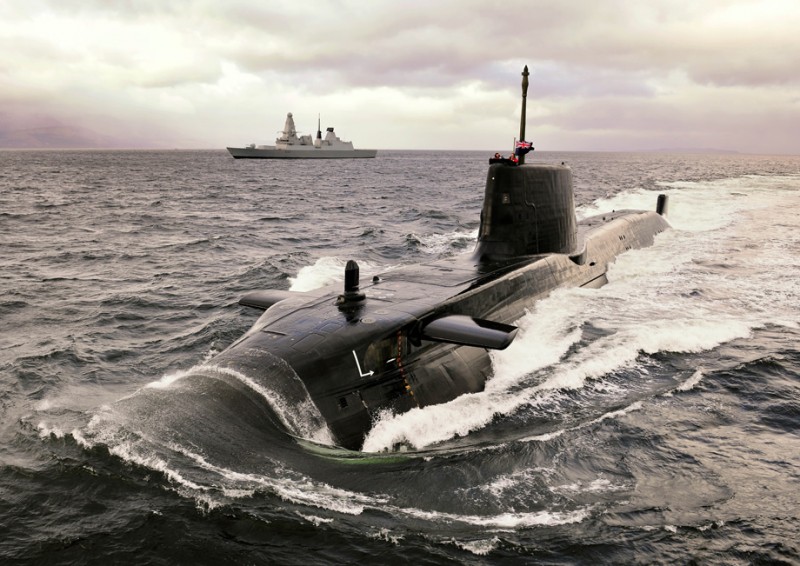
Tomahawk was first introduced as a FMS program in 1995, when the United Kingdom acquired 65 missiles. The Royal Navy’s Trafalgar– and Astute-class submarines are currently Tomahawk BLK III/IV capable with a fully integrated support infrastructure (including mission planning system and post-launch command and control). The service is planning to reconstitute their weapon inventory, and the upgraded BLK IV missile could be a viable fit for both the attack submarine force and new TYPE 26 Destroyer.
Other nations, including Australia, Canada, Denmark, Italy, Japan, the Netherlands and Poland are evaluating the potential benefits of Tomahawk. Indeed, Poland specifically requested a submarine-launched Tomahawk capability earlier this year. Many allies continue to work toward FMS approval through the staffing of internal requirements and conducting feasibility studies. The accompanying table provides amplifying information on prospective customers.
Country |
Potential Host Combatants |
*Notional Procurement |
| United Kingdom | Astute -class SSN/Trafalgar-class SSN
Type 26 FFG (Global Combat Ship) |
100-200 missiles
|
| Australia | Hobart-class DDG
Sea-500-class FFG |
100 missiles |
| Japan | Kongo-class DDG | 100-150 missiles |
| Italy | Type 212A Submarine | 50 |
| Poland | Type 212A Submarine | 50 |
| * First FMS order of 65 weapons for UK in 1995 | ||
Tomahawk is a relatively complex weapons system, especially factoring integrated shipboard planning and missile command and control. The fact that these countries field modern navies capable of supporting coalition operations adds standing to their potential request for the missile. Other international initiatives, including the Joint Strike Fighter (Australia, UK, Italy), P-8 Poseidon (UK, Australia), MQ-4 Triton Unmanned Air Vehicle (Australia), EA-18G Growler (Australia), RQ-4 Global Hawk Unmanned Air Vehicle (Japan), and E-2D Advanced Hawkeye (Japan), further attest to the ability of the allies to maintain and employ sophisticated weapon programs.
In addition, there is a natural operational synergy between Tomahawk and potential benefits delivered by these platforms. They include initial targeting information, inflight target updates and third-party weapons control. These programs can enhance Tomahawk’s current net-enabled capabilities and envisioned upgrades, bringing our allies a highly responsive, over the horizon capable, target flexible, “strike system.”
Acquisition Efficiencies
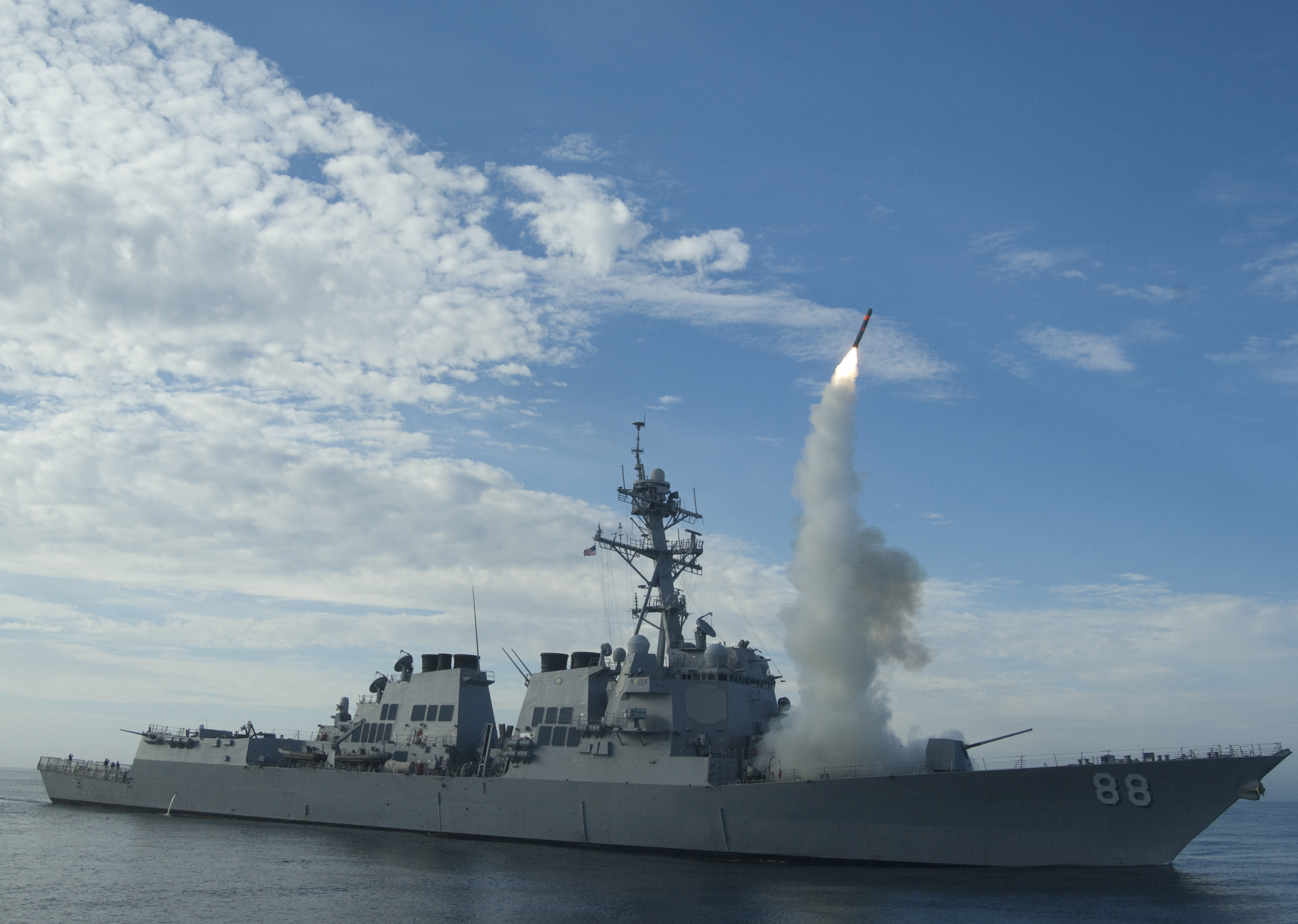
In today’s budget climate, it is imperative to discover acquisition efficiencies and develop feasible paths to more affordable capabilities. Indeed, high level DOD acquisition guidance cite the various cost benefits available through international programs. Prospective areas for savings through Tomahawk FMS are numerous and include unit production, warranty, re-certification and modernization costs. The efficiencies derived from a sizeable production run for a specialized weapon are significant. Fixed costs can be distributed among multiple customers. Economies of scale for specified materials are notably increased. And a cooperative development effort (applicable for our closest allies) offers a potential means by which to share and reduce investment costs.
Funds realized through Tomahawk FMS can be used to support modernization upgrades or procurement of additional missiles. For example, the DOD could essentially receive one additional Tomahawk for every four delivered through FMS. Were three of our allies (UK, Australia, and Japan) to procure 400 Tomahawks for their surface and submarine combatants, the proceeds generated could yield another 100 rounds for the U.S. inventory. While such numbers would be realized over a period of several years, they none the less offer the potential to significantly increase the effective weapon buy.
Allied ‘Distributed Lethality’
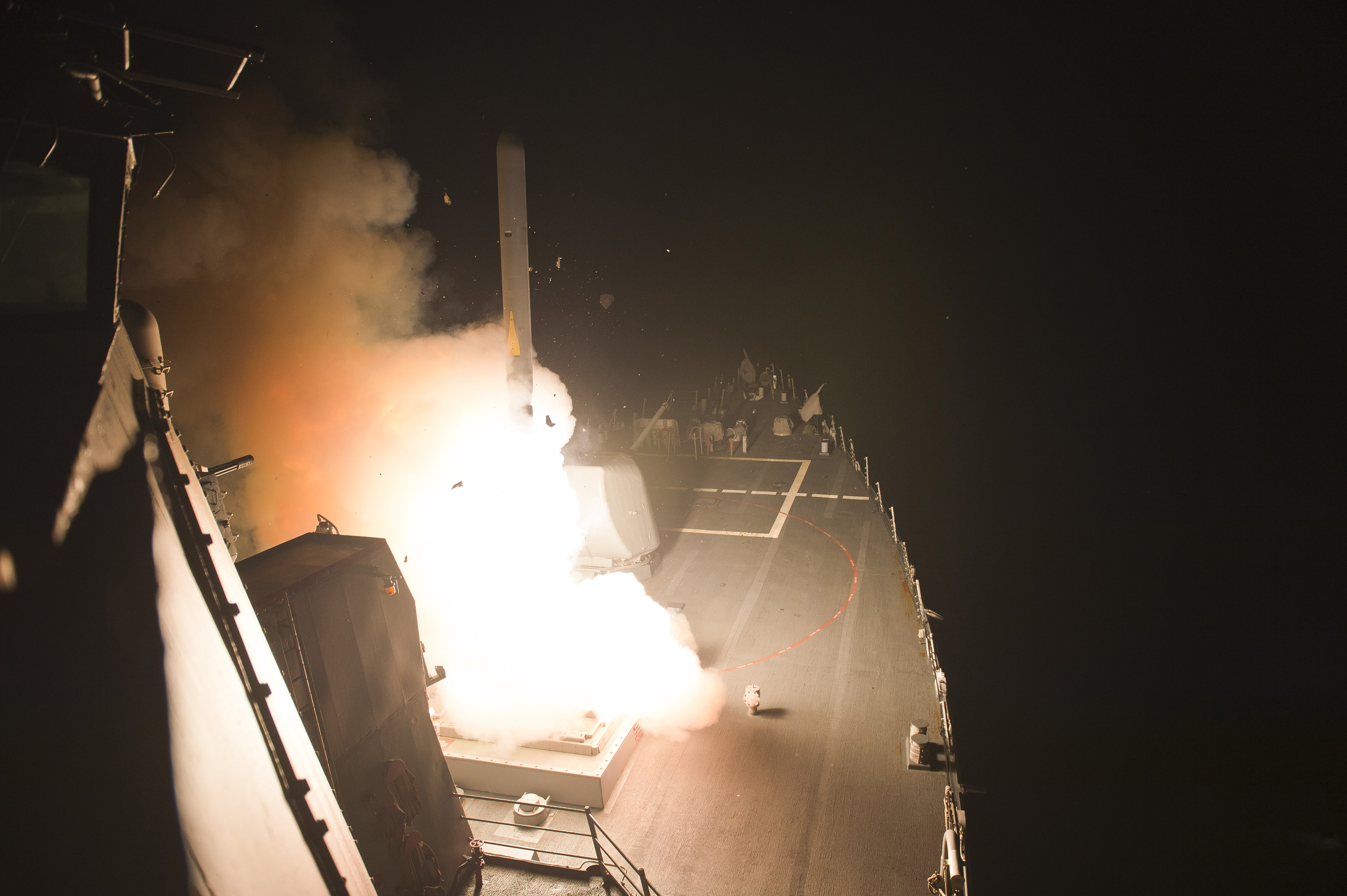
The impact of Tomahawk FMS could be substantial and wide ranging. It provides our partners with more than a long range strike weapon for their surface combatants and submarine forces. By leveraging operational and acquisition efficiencies, Tomahawk FMS can bring allied navies into the fold of “Distributed Lethality.”
Tomahawk FMS can strengthen the concept of “Distributed Lethality” by serving as a force multiplier through the combination of scores of additional weapons hosted on allied destroyers and attack submarines. This is a significant capability available to both coalition planners and commanders, further “spreading the playing field” and enlarging the target set to be held at risk. Conversely, the addition of numerous long range strike capable combatants delivers a notable effect on an adversary, restricting his ability to maneuver or forcing him to operate while exposed to attack.
Tomahawk FMS provides a weapon system that will enable an “allied shift to the offensive” across the phases of operations. The opportunity is there for both an autonomous and integrated strike weapon, enabled by coordinated mission planning, common TTP development, and compatibility with U.S. and allied targeting systems. A Tomahawk-equipped allied surface strike group can serve as a responsive deterrent in an emerging regional flashpoint. Such a force is well complemented but not dependent on the availability of U.S. forces in the region. If hostilities should commence, allied surface combatants and submarine forces outfitted with Tomahawk can rapidly support initial operations using preplanned mission sets and over the horizon (OTH) targeting updates. And Tomahawk is a weapon that is increasingly relevant as operations unfold and additional forces flow into theater. For example, the weapon’s attributes of range and connectivity are well suited to support coordinated engagements with carrier air wing strike packages or the P-8A Poseidon.
Summary
Tomahawk was first provided as an FMS program nearly two decades ago. Since then, the weapon system has been continually upgraded in terms of responsiveness and lethality. The importance of such a capability has only increased, as seen by the operational unveiling of modern Russian naval missiles in the Middle East. Tomahawk FMS brings a unique opportunity to significantly bolster our allies in the face of common security challenges. It is an opportunity we need to take advantage of.




